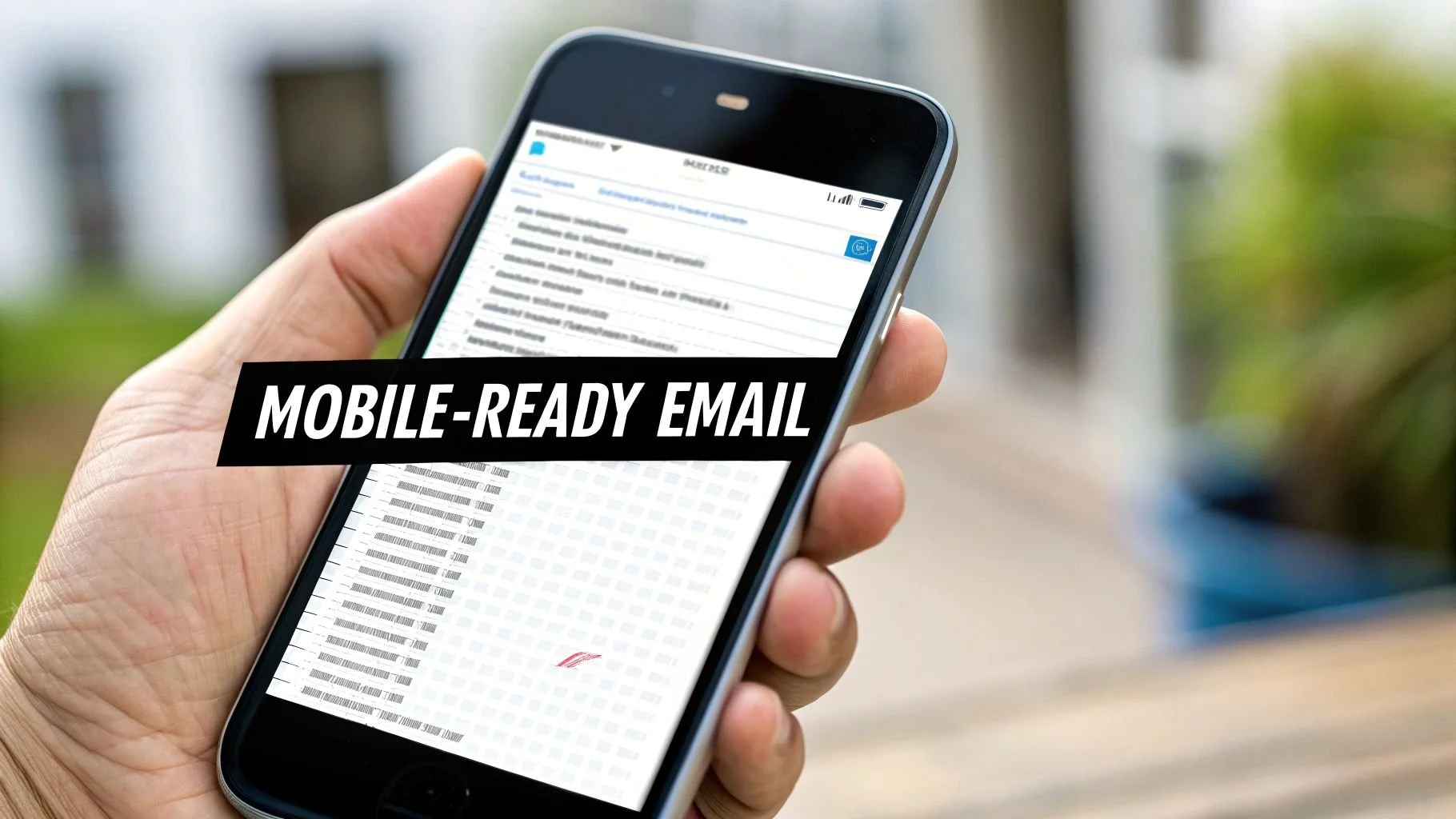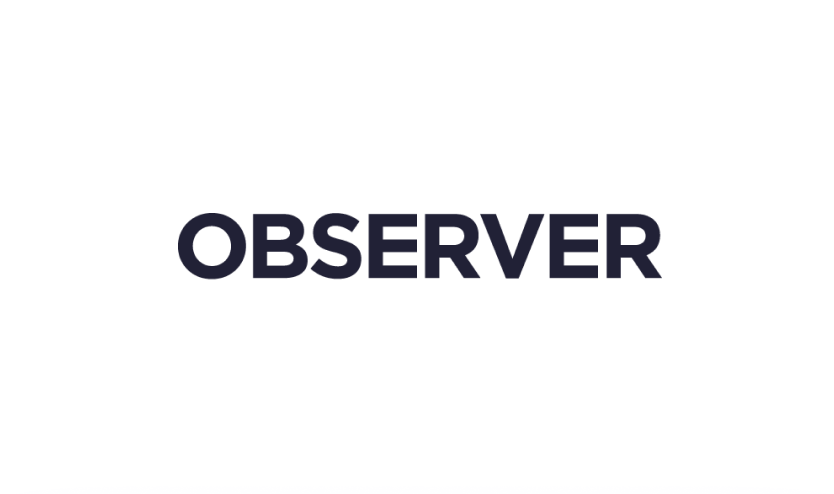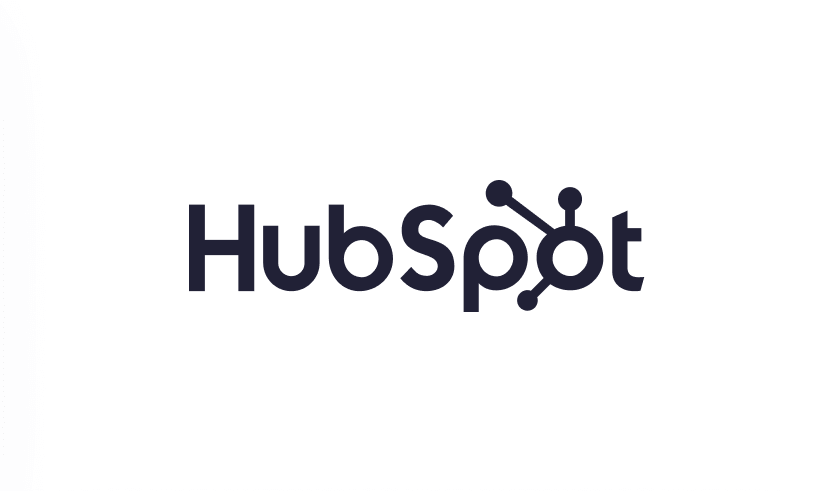Top Email Marketing Mistakes to Avoid in 2025
Stop Sabotaging Your Email Success
Are your email marketing efforts falling flat? You're not alone. Many businesses unknowingly make critical email marketing mistakes that hinder their success. This listicle reveals eight common email marketing mistakes that could be costing you conversions. Learn how to fix issues like poor subject lines, inadequate list segmentation, neglecting mobile optimization, bad sending practices, weak calls-to-action, skipping A/B testing, poor deliverability, and insufficient performance tracking. Boost your email marketing ROI by avoiding these pitfalls and transforming your email program into a revenue powerhouse.
1. Poor Subject Line Strategy
The gateway to your email's success hinges on a single, crucial element: the subject line. This is perhaps the most critical email marketing mistake, acting as the first impression and often the sole determinant of whether a recipient opens your message. A poorly crafted subject line can single-handedly derail your entire email campaign, rendering even the most compelling content unseen. Think of it as the headline of a news article; if it doesn't grab attention, the story goes unread. Why does this deserve a top spot on the list of email marketing mistakes? Because 47% of recipients base their decision to open an email solely on the subject line. This makes it a critical lever for maximizing your open rates and, consequently, your overall campaign performance.
The subject line isn't just about grabbing attention; it plays a multifaceted role in your email's journey. It influences spam filter decisions, contributes to your sender reputation, and sets the tone for the entire message. Given the prevalence of mobile email usage, optimizing your subject line for mobile devices is crucial, with only the first 25-30 characters typically visible. This limited real estate makes every character count. Furthermore, the subject line presents a valuable opportunity for A/B testing, allowing you to refine your approach and identify what resonates best with your audience.
However, the power of the subject line comes with its own set of potential pitfalls. Certain words can trigger spam filters, relegating your email to the junk folder and damaging your sender reputation. Low open rates resulting from uninspired subject lines further contribute to this negative cycle. Clickbait subjects, while potentially effective in the short term, can erode brand trust and alienate your subscribers. Generic subjects, on the other hand, simply get lost in the deluge of emails flooding inboxes every day. Ultimately, a poor subject line wastes the entire investment you've made in crafting your email content.
Consider these real-world examples: During Barack Obama's 2012 presidential campaign, A/B testing revealed the surprising effectiveness of the simple subject line "Hey," which generated millions in donations. BuzzFeed, known for its engaging content, employs curiosity-driven subject lines like "This Will Make You Question Everything" to pique readers' interest. Warby Parker uses subject lines like "Uh-oh, your prescription is expiring" to create a sense of urgency without resorting to aggressive tactics. These examples demonstrate the impact of a well-crafted subject line, from generating revenue to driving engagement.
So, how can you craft compelling subject lines that avoid these pitfalls? Here are some actionable tips:
Keep it concise: Aim for under 50 characters to ensure optimal display on mobile devices.
Personalize: Use personalization tokens like the recipient's name when relevant to create a sense of connection.
Create urgency strategically: Emphasize time-sensitive offers or information without resorting to manipulative language.
A/B test consistently: Experiment with different approaches to discover what works best for your audience.
Avoid spam triggers: Steer clear of words like "FREE," "URGENT," and excessive exclamation points.
Utilize preview text: Extend your subject line with engaging preview text to provide additional context and entice recipients to open.
Learn more about Poor Subject Line Strategy to further refine your approach. Developing a strong subject line strategy is not just about avoiding email marketing mistakes; it's about maximizing the impact of every email you send. It’s about transforming a simple line of text into a powerful tool for driving engagement, building relationships, and achieving your email marketing goals. By understanding the importance of the subject line and implementing these tips, you can ensure that your emails get the attention they deserve.
2. Lack of Proper List Segmentation
One of the most detrimental email marketing mistakes is neglecting proper list segmentation. This common pitfall involves sending the same generic message to your entire email list without considering individual subscriber preferences, behaviors, demographics, or engagement levels. This one-size-fits-all approach is a recipe for high unsubscribe rates, low engagement, and missed opportunities for personalized communication that resonates with your audience. Why does this matter? Because in the crowded digital landscape, relevance reigns supreme. Customers are bombarded with information constantly, and generic emails simply get lost in the noise.
Segmentation, on the other hand, allows you to divide your subscriber list into smaller, more targeted groups based on shared characteristics. This enables you to tailor your messaging to specific segments, delivering content that is genuinely relevant and valuable to each recipient. Think about it: would you rather receive a generic email promoting products you have no interest in, or a curated selection based on your past purchases and browsing history? The answer is clear.
Several powerful segmentation methods exist, each offering unique insights into your audience:
Demographic Segmentation: Utilizing information like age, location, and gender allows you to tailor messages based on broad demographic trends. For example, a clothing retailer might segment by gender to promote specific product lines.
Behavioral Segmentation: Analyzing purchase history, email engagement (opens, clicks), and website activity reveals valuable insights into individual preferences. This data allows you to send targeted product recommendations, exclusive offers, or reminders about abandoned carts.
Psychographic Segmentation: Delving into interests, values, and lifestyle choices allows for deeper personalization. A company selling sustainable products might segment their list based on environmentally conscious values.
Lifecycle Stage Segmentation: Recognizing where a subscriber is in their customer journey (new subscriber, loyal customer, etc.) allows you to tailor messages accordingly. Welcome emails for new subscribers should differ significantly from loyalty program offers for long-term customers.
Geographic and Time-Zone Considerations: Sending emails at the optimal time for each recipient, considering their geographic location and time zone, maximizes open rates and engagement.
The consequences of neglecting segmentation are significant. Generic messages feel impersonal and irrelevant, leading to higher unsubscribe rates and lower click-through rates. This translates to wasted marketing budget and, ultimately, damage to your sender reputation due to poor engagement.
Companies like Amazon, Spotify, Airbnb, and Netflix have successfully implemented segmentation to enhance their email marketing efforts. Amazon segments by purchase history and browsing behavior for personalized product recommendations. Spotify creates segments based on music preferences and listening habits. Airbnb segments by travel preferences, previous bookings, and geographic location. And Netflix segments by viewing history and genre preferences. These examples demonstrate the power of segmentation across various industries.
The following infographic visualizes key segmentation metrics demonstrating its impact on revenue:
These statistics highlight the significant revenue boost achievable through segmented campaigns. 58% of marketing revenue originates from segmented campaigns, demonstrating their effectiveness. Segmented emails generate 18 times more revenue than generic broadcast emails, showcasing the power of personalization. Finally, studies show a potential 760% revenue uplift with proper segmentation, emphasizing the importance of this strategy.
To effectively implement segmentation, consider these actionable tips: segment by engagement level (active, inactive, highly engaged); use purchase history to create relevant product recommendations; segment by email preferences and frequency; create segments based on signup source; use progressive profiling to gather more segmentation data; and regularly clean and update your segment criteria. Tools like Omnisend, HubSpot, Mailchimp, and Klaviyo offer robust segmentation features to assist in this process. Learn more about Lack of Proper List Segmentation.
By embracing segmentation and moving away from generic blasts, you can transform your email marketing from a source of frustration for your subscribers into a powerful engine for engagement, conversion, and revenue growth.
3. Ignoring Mobile Optimization
In today's mobile-first world, overlooking mobile optimization in your email marketing strategy is a critical mistake. With over 60% of emails being opened on mobile devices, neglecting this crucial aspect is akin to shutting the door on a significant portion of your audience. A mobile-unfriendly email experience leads to frustration, immediate deletions, and ultimately, lost revenue. This oversight can severely hamper your email marketing efforts, impacting everything from open rates and click-through rates to brand perception and conversions. Essentially, you're leaving money on the table by not catering to the majority of your subscribers.
Mobile optimization isn't just a trend; it's a necessity. It involves designing and structuring your emails to render seamlessly across a variety of devices and screen sizes. This includes smartphones, tablets, and even smartwatches. A non-responsive design, where the layout remains fixed regardless of the screen size, is a surefire way to alienate mobile users. Imagine trying to decipher tiny text, struggling to tap minuscule buttons, or encountering a completely broken layout on your phone. This is the frustrating experience you deliver to your subscribers when you ignore mobile optimization.
Key features of a mobile-optimized email include responsive design that adapts to different screen sizes, ensuring a consistent and user-friendly experience. Touch-friendly buttons and links, with a minimum size of 44px, are crucial for easy navigation and interaction on touchscreens. Readable font sizes, starting at 14px minimum, prevent eye strain and ensure readability. Single-column layouts are generally preferred for mobile as they simplify the viewing experience and eliminate horizontal scrolling. Finally, optimized image scaling and loading are essential for preventing slow load times and ensuring images display correctly on smaller screens.
The consequences of neglecting mobile optimization are far-reaching. A poor user experience leads to immediate email deletion, significantly impacting your open and click-through rates. Difficult navigation due to small buttons or broken layouts reduces engagement and frustrates users. Small, illegible text strains the reader's eyes, making it unlikely they’ll bother reading your message. Broken layouts not only hinder readability but also damage your brand perception, portraying a lack of professionalism and attention to detail. Ultimately, the biggest consequence is lost conversion opportunities from a significant portion of your mobile user base.
Leading brands understand the importance of mobile optimization and have successfully integrated it into their email marketing strategies. Starbucks, for instance, leverages single-column layouts with large, easily tappable buttons, creating a seamless mobile experience. Uber's emails employ a minimalist design with clear call-to-actions (CTAs) optimized for mobile interaction. Target effectively utilizes responsive design with product images that scale perfectly across various devices. Dropbox also showcases clean, mobile-first design principles with prominent action buttons that are easy to locate and tap.
Implementing mobile optimization in your email marketing campaigns isn't complex. Here are some actionable tips:
Embrace Single-Column Layouts: These layouts render better on mobile devices and eliminate the need for horizontal scrolling.
Optimize CTA Buttons: Ensure your CTAs are at least 44px high for easy tapping on touchscreens.
Prioritize Readable Fonts: Use web-safe fonts with a minimum size of 14px for optimal readability.
Test Thoroughly: Test your emails across multiple devices and email clients to ensure consistent rendering.
Concise Subject Lines: Keep subject lines under 30 characters to optimize for mobile previews.
Use Alt Text for Images: Include alt text for images in case they don't load, providing context to users.
In conclusion, ignoring mobile optimization is a detrimental email marketing mistake that can significantly impact your campaign performance and ROI. By prioritizing mobile-friendly design and following the tips outlined above, you can create a positive user experience, boost engagement, and maximize your conversion potential across all devices. This is not just a best practice; it’s a fundamental requirement for successful email marketing in today's mobile-driven world.
4. Sending Emails at Wrong Times and Frequencies: A Critical Email Marketing Mistake
One of the most common yet overlooked email marketing mistakes is sending emails at the wrong times and frequencies. While crafting compelling content and designing visually appealing emails are crucial, delivering them at the optimal moment is what truly determines their effectiveness. Poor timing and frequency management can significantly impact your campaign results, potentially leading to disengaged subscribers and ultimately, a damaged sender reputation. This makes mastering this aspect a non-negotiable element of any successful email marketing strategy.
Timing and frequency aren't about guesswork; they require a strategic approach based on understanding your audience and their behavior. Sending too many emails can overwhelm subscribers and lead to a surge in unsubscribes, essentially throwing your marketing efforts down the drain. Conversely, sending too few emails allows your brand to fade into the background, losing valuable engagement and mindshare. Even if your frequency is in the "Goldilocks zone," sending emails when your audience isn't actively checking their inboxes renders your efforts futile. Furthermore, in today's globalized world, neglecting time zone differences can significantly reduce international engagement, leaving a large portion of your potential audience untouched. Inconsistency in your sending schedule also negatively impacts your sender reputation, potentially landing your emails in the spam folder.
This email marketing mistake is particularly damaging because it directly affects your deliverability and engagement rates. Even the most meticulously crafted email will fail if it reaches the inbox at an inconvenient time or gets lost in a sea of other messages. Finding the right balance between maintaining consistent communication and avoiding overwhelming your audience is crucial for building a loyal subscriber base and achieving your marketing goals.
Successful Implementations: Learning from the Best
Several successful brands have mastered the art of email timing and frequency. Consider these examples:
TheSkimm: This popular newsletter delivers daily digests of current events at 6 AM EST, capitalizing on the time when many subscribers are starting their day and eager to catch up on the news.
Grubhub: This food delivery service strategically sends lunch promotions around 11 AM and dinner deals around 4 PM, aligning their offers with peak hunger periods.
B2B Companies (e.g., HubSpot): Many B2B companies have found that Tuesday-Thursday are the most effective days for sending emails, aligning with typical business schedules.
Retail Brands: These brands often increase their email frequency during holiday seasons to capitalize on increased consumer spending and promote special offers.
These examples demonstrate how understanding your target audience's habits and tailoring your email schedule accordingly can significantly improve engagement and drive conversions.
Actionable Tips for Optimizing Your Email Timing and Frequency:
A/B Test Different Send Times: Start by testing various send times with small segments of your audience to determine when they are most responsive.
Subscriber Preferences: Offer subscribers the option to choose their preferred email frequency, empowering them to control their inbox experience.
Send Time Optimization: Leverage send time optimization features offered by many email marketing platforms to automate the process of sending emails at the best time for each individual subscriber.
Monitor Engagement Metrics: Closely track metrics like open rates, click-through rates, and unsubscribe rates to gauge the effectiveness of your current sending schedule and identify areas for improvement.
Consider Audience Lifestyle: Take into account your audience's typical work schedule, lifestyle, and time zone to ensure your emails are reaching them at the most opportune moments.
Segment Based on Engagement: Reduce the email frequency for less engaged subscribers to avoid overwhelming them and potentially triggering unsubscribes.
When and Why to Implement These Strategies:
Implementing these strategies is essential from the very beginning of your email marketing efforts. Don't wait until you see high unsubscribe rates or declining engagement to address timing and frequency issues. Proactively optimizing these aspects from the outset will contribute to a healthier subscriber list, improved engagement, and ultimately, a more successful email marketing program.
By avoiding the common email marketing mistake of incorrect timing and frequency, you can ensure your message resonates with your audience, strengthens your brand presence, and drives the desired results. Failing to address this crucial element can significantly hinder your email marketing success, making it a critical area to focus on for any business seeking to leverage the power of email.
5. Weak or Missing Call-to-Action (CTA)
One of the most detrimental email marketing mistakes is having a weak or missing call-to-action (CTA). This seemingly small oversight can single-handedly derail an entire email campaign, wasting valuable time and resources. A CTA is the bridge that connects your engaging email content to tangible business results. Without a clear and compelling CTA, your subscribers, despite enjoying your email, are left stranded, unsure of the next step. This translates directly into lost conversions and diminished ROI, making a strong CTA absolutely essential for successful email marketing. This mistake is particularly damaging in the competitive landscape of e-commerce, where a clear path to purchase is paramount.
A call-to-action is the instruction you give your email recipients, telling them what you want them to do after reading your message. It's the driving force that propels them from passive readers to active participants. Whether it's visiting your website, making a purchase, downloading a resource, or signing up for a webinar, your CTA guides them towards the desired action. This makes it a pivotal element in converting email engagement into tangible outcomes like sales, leads, and brand loyalty.
Failing to provide a clear CTA is like leading a horse to water but not showing it how to drink. You’ve captured their attention with your email content, but you haven't provided the necessary direction to capitalize on that engagement. This can manifest in several ways: vague language like "click here," multiple competing CTAs that dilute the message, buttons that are too small or difficult to locate, or a complete absence of any CTA whatsoever. Each of these scenarios contributes to a frustrating user experience and ultimately hinders your campaign’s effectiveness.
Examples of successful CTAs abound, showcasing how a well-crafted prompt can drive conversions. Netflix's "Start Your Free Month" offers a clear value proposition and a direct action. Airbnb's "Book Now and Save 15%" combines urgency with a tangible benefit. Spotify's "Get Premium Free for 30 Days" highlights a specific timeframe and value, while Slack's "Try Slack with Your Team" is personalized and action-focused. These examples demonstrate the power of concise, action-oriented language coupled with a clear value proposition.
Here's how to craft compelling CTAs that convert:
Use Action Verbs: Start your CTA with strong action verbs that clearly communicate the desired action. Words like "Get," "Download," "Start," "Discover," "Shop," "Claim," and "Join" create a sense of immediacy and encourage interaction.
Prominent Visual Design and Placement: Make your CTAs visually stand out. Use contrasting colors, larger font sizes, and ample white space to draw attention to the button or link. Place your primary CTA "above the fold" so recipients see it without scrolling.
Single Primary CTA per Email: Avoid overwhelming your readers with multiple CTAs. Focus on one primary objective for each email and tailor your CTA accordingly. Multiple CTAs can dilute focus and reduce conversion rates by creating decision paralysis.
Value Proposition and Urgency: Clearly communicate the value recipients will receive by clicking the CTA. Incorporate urgency with phrases like "Limited Time," "Today Only," or "While Supplies Last" to motivate immediate action.
Mobile Optimization: Ensure your CTA buttons are appropriately sized and easily clickable on mobile devices. A significant portion of your audience will likely be reading your emails on their smartphones, so mobile optimization is crucial.
First-Person Language: Personalize your CTAs using first-person language like "Start My Free Trial" or "Claim My Discount." This creates a sense of ownership and encourages engagement.
Pros of a Strong CTA:
Clarity: Guides recipients towards the desired action, minimizing confusion.
Increased Conversions: Drives higher click-through rates and ultimately boosts conversions.
Improved ROI: Maximizes the return on investment for your email marketing efforts.
Enhanced User Experience: Creates a seamless and intuitive experience for your subscribers.
Cons of a Weak or Missing CTA:
Confusion: Vague CTAs leave recipients unsure about the next steps.
Reduced Conversions: Multiple or weak CTAs dilute focus and hinder conversions.
Lost Opportunities: Missing CTAs waste the potential of engaging email content.
Poor User Experience: Frustrates users and damages your brand perception.
In the realm of email marketing, a compelling CTA is not a mere suggestion, it's a necessity. It's the final, crucial piece of the puzzle that transforms a well-crafted email into a conversion-generating machine. By avoiding the pitfalls of weak or missing CTAs and implementing the strategies outlined above, you can dramatically improve your email marketing performance and achieve significant business results. Whether you're an e-commerce business owner, a marketing manager, or an aspiring email marketer, mastering the art of the CTA is essential for success.
6. Not A/B Testing Email Campaigns
One of the most detrimental email marketing mistakes is neglecting the power of A/B testing. Failing to systematically test different elements of your email campaigns is akin to navigating a maze blindfolded. You might eventually stumble upon the exit, but it will take significantly longer and involve numerous wrong turns. A/B testing, also known as split testing, illuminates the path to optimal email performance by providing data-driven insights. It involves sending two slightly different versions (A and B) of an email to separate segments of your audience and analyzing which version performs better based on metrics like open rates, click-through rates, and conversions. Skipping this crucial step means missing out on opportunities to significantly improve your results and leaving money on the table. This mistake places you at a disadvantage against competitors who leverage data to refine their campaigns and maximize their return on investment. For e-commerce business owners, marketing managers, and entrepreneurs alike, A/B testing is not just a best practice; it's a necessity in today's competitive digital landscape.
A/B testing allows you to optimize various elements of your email marketing strategy, including:
Subject Line Testing: The subject line is the first impression, the gatekeeper to your email's content. Testing different subject lines – for example, using questions versus statements, emojis versus no emojis, or personalized greetings versus generic ones – can drastically impact your open rates.
Send Time Optimization: Timing is everything. Sending your emails at the optimal time, when your audience is most likely to engage, can dramatically increase your open and click-through rates. A/B testing helps you pinpoint those golden hours.
Call-to-Action (CTA) Optimization: Your CTA is the bridge between engagement and conversion. Testing different CTA button colors, text, and placement can significantly influence click-through rates and ultimately, conversions.
Email Content and Design Layout Testing: From the length of your email copy to the placement of images and the overall design layout, A/B testing can reveal what resonates best with your audience and drives the desired action.
Personalization Level Testing: How personalized should your emails be? Testing different levels of personalization, from addressing subscribers by name to tailoring content based on their past behavior, can help you strike the right balance and enhance engagement.
The consequences of not A/B testing can be substantial, leading to:
Subpar Performance: Without data-driven insights, your campaigns are likely underperforming, leaving potential revenue untapped.
Decisions Based on Assumptions: Instead of relying on data, you're making decisions based on gut feelings and assumptions, a risky strategy in the data-driven world of email marketing.
Competitive Disadvantage: Competitors who embrace A/B testing gain a significant edge by constantly optimizing their campaigns and outperforming you in key metrics.
Wasted Budget: You’re essentially pouring money into campaigns that aren't performing optimally, resulting in a lower return on investment.
Inability to Scale: Without identifying the elements that drive success, you can’t effectively scale those elements across your campaigns.
History is replete with examples of the power of A/B testing. The Barack Obama 2012 presidential campaign famously tested a simple "Hey" versus more formal subject lines and found that "Hey" significantly outperformed the others. Content powerhouse Upworthy tests up to 25 different headlines before publishing a piece of content. Closer to home, Mailchimp's own internal testing revealed that using emojis in subject lines increased open rates by an average of 10%. ConversionXL increased email signups by a staggering 73% simply by changing the color of their CTA button.
To effectively implement A/B testing in your email marketing strategy, consider these actionable tips:
Test One Element at a Time: For clear, interpretable results, focus on testing only one element at a time. Changing multiple variables simultaneously makes it difficult to pinpoint the specific element driving the change in performance.
Ensure Statistically Significant Sample Sizes: Testing with too small a sample size can lead to inaccurate conclusions. Ensure your sample size is large enough to provide statistically significant results.
Test for a Full Business Cycle: Test for at least one full business cycle (e.g., a week or a month) to account for any weekly or monthly variations in your audience's behavior.
Document Your Results: Maintain a detailed record of all your A/B tests, including the tested elements, the results, and any conclusions drawn. This documentation becomes a valuable resource for future campaigns.
Start with High-Impact Elements: Begin by testing high-impact elements like subject lines and CTAs, as these often yield the most significant improvements.
Leverage Built-in Testing Tools: Most email marketing platforms like Mailchimp and Campaign Monitor offer built-in A/B testing features, simplifying the process and providing readily available data analysis.
By incorporating A/B testing into your email marketing strategy, you transform your campaigns from shots in the dark to calculated, data-driven endeavors, maximizing your return on investment and driving sustainable growth.
7. Poor Email Deliverability Practices
One of the most detrimental email marketing mistakes is neglecting email deliverability. Even with compelling content and a targeted audience, your efforts are wasted if your emails aren't reaching the inbox. Poor email deliverability practices essentially sabotage your entire email marketing strategy, rendering your campaigns ineffective and hindering your potential for revenue growth. This mistake encompasses a range of issues, from technical misconfigurations to neglecting list hygiene and ignoring legal compliance. It's a critical aspect of email marketing that can significantly impact your bottom line.
Email deliverability refers to the ability of your emails to successfully reach your subscribers' inboxes rather than being flagged as spam or bounced back. It involves a complex interplay of factors, including your sender reputation, email authentication, list quality, and adherence to anti-spam regulations. When these elements aren't properly managed, your emails are more likely to end up in spam folders, unseen and ineffective. This not only wastes your marketing investment but also damages your long-term email program success by impacting your sender reputation, a score assigned by internet service providers (ISPs) based on your sending practices. A poor sender reputation can make it increasingly difficult to reach your audience over time.
Several key features contribute to strong email deliverability:
Email Authentication (SPF, DKIM, DMARC): These technical protocols verify that your emails are genuinely coming from your domain, protecting against spoofing and phishing attacks. They signal to ISPs that you're a legitimate sender.
Consistent Sending Domain and IP Reputation: Maintaining a consistent sending domain and IP address helps build trust with ISPs. Sudden changes or using shared IP addresses with bad actors can negatively impact your reputation.
List Hygiene and Bounce Management: Regularly cleaning your email list by removing invalid or inactive email addresses is crucial. High bounce rates signal poor list quality and can damage your sender reputation.
Spam Compliance and Legal Requirements: Adhering to regulations like CAN-SPAM and GDPR is essential for avoiding legal issues and maintaining good standing with ISPs. This includes providing unsubscribe options and accurately identifying your business.
Engagement-Based Sending Practices: Segmenting your audience and sending targeted emails to engaged subscribers demonstrates to ISPs that your emails are valuable and desired. This positive engagement strengthens your sender reputation.
The consequences of poor deliverability are significant:
Emails Land in Spam Folders: This is the most obvious and frustrating consequence, rendering your campaigns invisible to your target audience.
Poor Sender Reputation: A damaged sender reputation is difficult to recover and can plague your email marketing efforts for a long time.
Legal Issues from Non-Compliance: Ignoring spam laws can lead to hefty fines and legal battles, further hindering your business operations.
Wasted Marketing Budget: Paying for email marketing services while your emails remain undelivered is a significant waste of resources.
Blacklisting: ISPs may blacklist your sending domain, making it virtually impossible to reach any inboxes.
Successful email deliverability is often achieved through a combination of in-house practices and utilizing specialized services. For example, companies like SendGrid and Mailgun specialize in deliverability services, offering infrastructure and expertise to optimize email delivery. Major retailers often maintain dedicated IP addresses for better reputation control, while B2B companies frequently use double opt-in to ensure high list quality. Many email service providers, like Constant Contact, handle authentication automatically, simplifying the technical aspects for users.
Learn more about Poor Email Deliverability Practices
To improve your email deliverability and avoid this common email marketing mistake, implement these actionable tips:
Implement SPF, DKIM, and DMARC authentication: These protocols are fundamental for establishing your legitimacy as a sender.
Use double opt-in for new subscribers: This confirms that subscribers genuinely want to receive your emails, improving engagement and reducing spam complaints.
Regularly clean your email list of bounces and inactive users: This maintains a healthy list and prevents damage to your sender reputation.
Monitor sender reputation using tools like Sender Score: Tracking your reputation allows you to identify and address potential issues proactively.
Avoid spam trigger words in subject lines and content: Certain words and phrases can trigger spam filters, so be mindful of your language.
Maintain consistent sending volume and frequency: Avoid sudden spikes in sending volume, which can raise red flags with ISPs.
By prioritizing email deliverability, you ensure that your carefully crafted messages reach their intended audience, maximizing the impact of your email marketing campaigns and driving better results for your business. Ignoring deliverability, on the other hand, is a costly email marketing mistake that can severely hamper your success.
8. Inadequate Email Analytics and Performance Tracking
One of the most detrimental email marketing mistakes is inadequate email analytics and performance tracking. Simply blasting emails into the digital ether without diligently monitoring their performance is akin to navigating a ship without a compass. You might reach somewhere, but it’s unlikely to be your intended destination. Ignoring data analysis in your email marketing strategy means missing crucial insights that can significantly improve your campaigns, ultimately hindering your return on investment (ROI). This oversight deserves its place on the list of critical email marketing errors because it prevents data-driven decisions and stunts the growth potential of your email campaigns.
This mistake often stems from a superficial understanding of email metrics. Many marketers fixate on basic metrics like open and click-through rates. While these offer a glimpse into campaign performance, they only scratch the surface. Truly understanding the impact of your emails requires delving into advanced metrics and analyzing the entire customer journey. This includes tracking key performance indicators (KPIs) throughout the subscriber lifecycle, from initial signup to long-term engagement and revenue generation.
Ignoring crucial metrics like lifetime value (LTV) and revenue attribution severely limits your ability to understand which subscribers are most valuable and which campaigns are driving the most revenue. Without this granular level of data, optimizing campaigns for maximum profitability becomes a guessing game. Furthermore, failing to integrate email data with website analytics and CRM systems leaves you with a fragmented view of customer behavior, making it challenging to personalize messages effectively.
Features of Comprehensive Email Analytics:
Basic Metrics: Open rates, click-through rates, and conversion tracking provide a foundational understanding of campaign performance.
Advanced Metrics: Lifetime value (LTV) and revenue attribution reveal the long-term value of subscribers and the effectiveness of specific campaigns in driving revenue.
Engagement Scoring and Subscriber Lifecycle Analysis: These features allow for segmented targeting and personalized messaging based on subscriber behavior and engagement levels.
A/B Testing Results and Statistical Significance: A/B testing provides data-backed insights into which email variations perform best, while statistical significance ensures the results are reliable.
Integration with Web Analytics and CRM Systems: Connecting email data with other marketing platforms provides a holistic view of customer behavior and enables more effective cross-channel marketing.
Consequences of Inadequate Analytics:
Missed Optimization Opportunities: Without proper data, identifying areas for improvement becomes virtually impossible, leading to stagnant or declining campaign performance.
Inability to Prove ROI: Stakeholders require data-driven evidence of marketing effectiveness. Without robust analytics, demonstrating the value of email marketing becomes challenging.
Difficulty Identifying Valuable Subscribers: Not knowing which subscribers contribute most to revenue hinders targeted campaigns and personalized communication.
Poor Strategic Decisions: A lack of data leads to uninformed decisions regarding campaign strategy, content creation, and audience segmentation.
Limited Personalization: Behavioral data is crucial for personalized email marketing. Without adequate tracking, personalization efforts become generic and ineffective.
Examples of Effective Email Analytics Implementation:
E-commerce companies: Track revenue per email and customer LTV to optimize product recommendations and promotional offers.
SaaS companies: Focus on trial signups and activation rates from emails to refine onboarding sequences and improve user retention.
Media companies: Track content engagement and subscription conversions to tailor content distribution and optimize subscription funnels.
B2B companies: Monitor lead quality and sales pipeline contribution to identify high-potential leads and improve lead nurturing strategies.
Actionable Tips for Implementing Robust Email Analytics:
Set up conversion tracking in Google Analytics: Track website actions resulting from email campaigns to measure the effectiveness of your emails in driving desired outcomes.
Track revenue attribution from email campaigns: Understand how much revenue is generated directly from email marketing efforts.
Monitor engagement trends over time: Don't just analyze individual campaigns; track long-term trends to identify patterns and optimize your overall email strategy.
Use UTM parameters for detailed traffic source tracking: Gain granular insights into which specific links and campaigns are driving traffic to your website.
Create custom dashboards for stakeholder reporting: Present clear and concise data visualizations to demonstrate the value of email marketing to stakeholders.
Analyze unsubscribe feedback for improvement insights: Understand why subscribers are opting out to identify areas for improvement in your email content and strategy.
Popular analytics platforms like Google Analytics, Klaviyo, HubSpot, and Litmus offer robust features for tracking and analyzing email marketing performance. Leveraging these tools and implementing the tips outlined above will empower you to transform your email marketing from a guessing game into a data-driven engine for growth. By understanding and acting on your email analytics, you can unlock the full potential of this powerful marketing channel.
Top 8 Email Marketing Mistakes Comparison
Elevate Your Email Marketing Game
Avoiding common email marketing mistakes is crucial for achieving success in today's digital landscape. We've covered eight key areas where many email marketers stumble: poor subject lines, inadequate list segmentation, neglecting mobile optimization, sending emails at suboptimal times, weak calls-to-action, skipping A/B testing, poor deliverability practices, and insufficient performance tracking. By addressing these email marketing mistakes and implementing the best practices outlined in this article, you can significantly enhance your email campaign performance, drive conversions, and ultimately boost your bottom line.
The most important takeaway? Treat your email list like gold. Nurturing your subscribers with relevant, engaging content delivered at the right time is paramount. Mastering these concepts allows you to build stronger customer relationships, foster loyalty, and drive repeat business. This translates directly to increased revenue and a healthier bottom line for your business.
Remember that the world of email marketing is constantly evolving. Continuous testing, tracking, and iterating are essential for staying ahead of the curve and maximizing your results.
Want to dive even deeper into avoiding email marketing mistakes and crafting high-converting campaigns?
Chase Dimond is an email marketing expert who provides in-depth training and resources to help businesses optimize their email strategies.
Visit Chase Dimond today for more advanced breakdowns and take your email marketing to the next level.



























